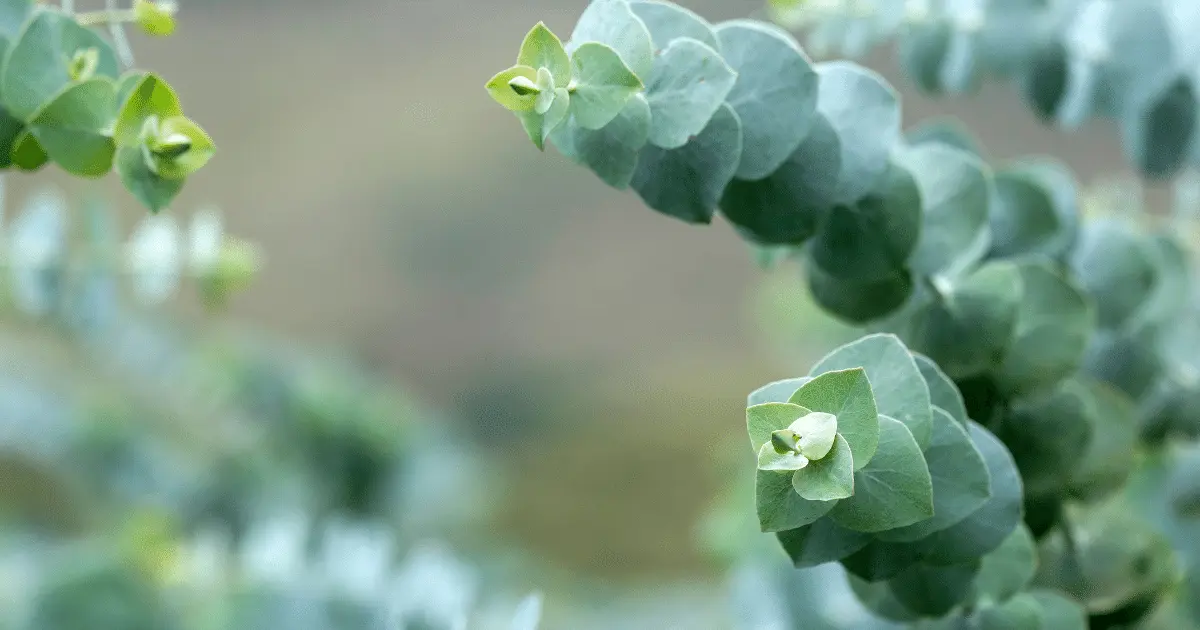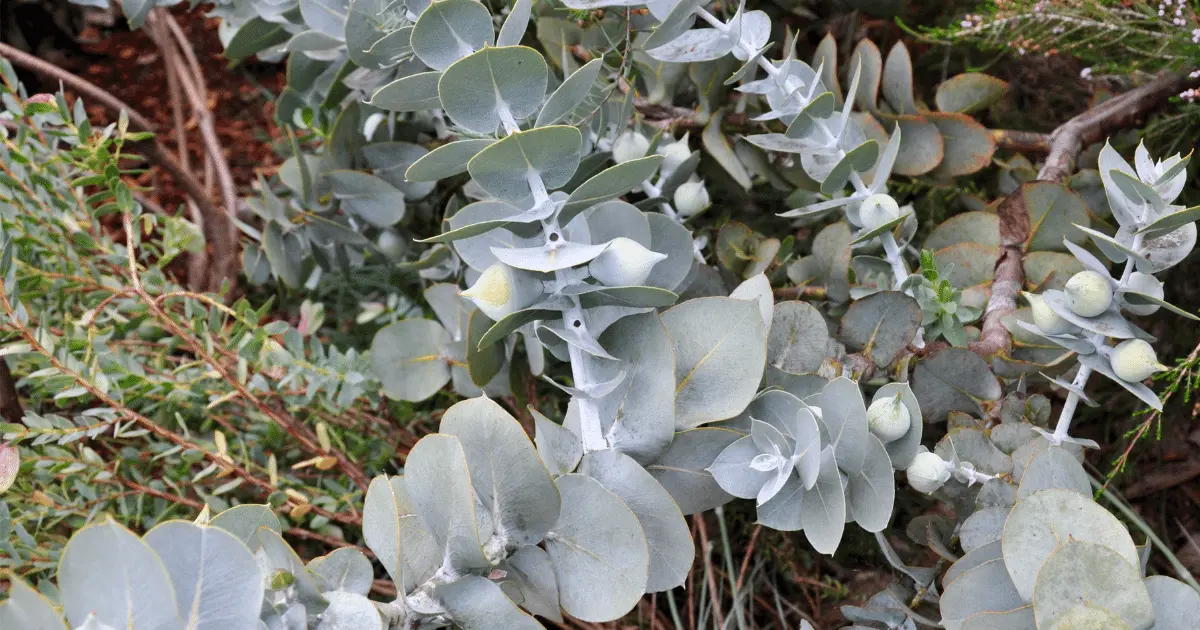So many people choose to plant Eucalyptus because of its eye-catching colors and medicinal value. Unfortunately, only a few can grow and care for this unusual plant that can be grown indoors and outdoors.
The Eucalyptus is a large species that typically comes in green and silver hues. There is also a specie called Rainbow Eucalyptus which has a beautiful hue on its bark; It’s amazing how a tree can have such lovely hues.
Easy Steps to Grow Eucalyptus

Although it has been confirmed that planting seeds are the best way to cultivate Eucalyptus plants, they can also be propagated using cuttings.
There are many ways to grow and care for Eucalyptus outdoors or indoors. Eucalyptus plants are initially from Australia but have been planted in different countries and climates. The Rainbow Eucalyptus tree will rank among the most beautiful and vibrant trees on the planet.
How To Grow Eucalyptus From Seeds
- Prepare your seeds and starter tray for seed sowing. You can purchase Eucalyptus seeds on eBay if you’re wondering where to buy them.
- Your eucalyptus seeds should be gently pressed into the starter tray’s high-quality soil, placed where they will receive sunlight, and watered twice a week.
How To Grow Eucalyptus From Cutting
Eucalyptus can also be grown from a cutting;
- Take a cutting between 4 and 6 inches long.
- Plant it in a little container with good soil.
- Put it in a warm location with plenty of sunlight.
- Water it once or twice per week.
You can also plant your Cutting directly in your garden or transplant it from a lot when it grows bigger.
Transplanting Eucalyptus Plant
You can either transplant it in a pot indoors or in your garden when it sprouts and grows to a height of 5 inches. Make sure the soil in your garden is of good quality, add fertilizers, and then transplant your Eucalyptus. Do the same thing with the pots you must constantly replace as your plants grow more prominent.
Eucalyptus Plant Care Needs

Aside from its stunning hues, people choose to grow it because of its therapeutic uses and ability to thrive in every Climate.
Whether you decide to grow them indoors in your house or outdoors in your garden, there are various species, and each specie has a recommended method for producing either indoors or outdoors.
Invades Space
Avoid planting them next to other plants because they are highly invasive and grow enormously especially outdoor ones. They appear to draw nutrients while leaving other plans without any nutrients.
It is advisable to place it far from other plants because its roots absorb a lot of water and other nutrients from the soil. The indoor plants can be planted in pots and grow between 8 to 40 feet tall, whereas the outdoor plants can reach heights of up to 200 feet. When they bloom, they often have a very lovely appearance.
Sunlight
The indoor species of Eucalyptus require sunlight to grow better; they need direct or full sunlight, especially during the winter. They require at least 7 hours of sunlight per day.
Without sufficient sunlight, Eucalyptus plants can wither, or their growth rate will slow down, especially those that are indoors. Plants need adequate sunlight, which everyone knows and can agree on. Always ensure to give your Eucalyptus plant the daily amount of sunshine required to grow well and bloom.
Watering
Eucalyptus Plants can actually go for a long time without water, but it’s nice to water your plants frequently. Depending on the season, it’s recommended to water your plants 2 to 3 times per month in seasons with heavy rainfall because they can actually go longer without water than during the summer.
It is advised to water your plants 1-2 times each week during the summer, For every other type of soil, you can water your plants once or twice a week, but you would need to water them daily for sandy soil. Please refrain from over-watering your plants because it kills the roots, which you will see when the leaves turn white and begin to fall.
Outdoor Eucalyptus plant may obtain their own water from the soil and can therefore live independently.
Re-Potting
Because of its rapid growth, you will need to re-pot your plant every spring. For eucalyptus plants, a deep air pot is recommended. It is advised to only water your plants for 4 to 5 days after transplanting or changing pots. After your plant has acclimated to the new container, you can resume your normal watering schedule.
The container’s diameter should be at most 1 inch for indoor Eucalyptus plants.
Fertiliser & Mulching
One of the most critical steps in caring for your plants is fertilization; however, because your plants are dormant throughout the winter, you should wait to fertilize them. Low-nitrogen fertilizers are the best to use for the Eucalyptus plant.
The best technique for fertilizing outside plants is to mulch. Remove 3 to 4 feet of vegetation from the tree trunk area and mulch it. Every year, the tree’s leaves and bark tend to fall off; this is a beautiful process for the Rainbow Eucalyptus tree as it sheds bark and reveals its stunning colors.
When the leaves fall throughout this procedure, use them as mulch. Well-fertilized plants typically bloom in the summer with stunning red to pink flowers that draw a lot of pollinators and leave your garden dazzling.
Temperature
The plant should have a temperature of between 60 and 70 degrees Fahrenheit. The optimal temperature for eucalyptus plants is excellent because they cannot endure high temperatures at any time, they are highly heat-sensitive, and indoor eucalyptus plants can benefit from a humidifier.
Additionally, constantly supply fresh air for your indoor plants because they need it to thrive; for indoor eucalyptus plants, open the windows during the warmer months to let in the fresh air.
Take Note Of Changes & Fix Them
Eucalyptus is an exceptional plant, so there are a few Observations you should note when growing your plants; these Observations will help you spot issues and address them right away.
- Avoid allowing your mulch to compose because this could cause the soil’s nitrogen level to rise, which is hazardous for your plant.
- here are numerous reasons why a plant’s leaves could die; these are a few reasons;
- It is advisable to stop watering that plant for a long time if the leaves turn white and begin to fall; this could be a sign of over-watering and that the root has already started to rot.
- Additionally, if your plant’s leaves turn yellow before falling, it could be a sign of cold; address the problem immediately.
- Hard water may also cause the leaves of the Eucalyptus plant to turn yellow and fall.
Besides its brilliant colors when it blooms, the eucalyptus plant has many tremendous advantages. It is an exceptional plant that can adapt to any climatic condition. when grown indoors without access to what they need to survive, such as suitable temperature, good sunlight, good water, and good fertilizer, it is best to provide these necessities. You should also check your plants frequently to see any problems.
One of the many fantastic advantages of Eucalyptus is, Despite having the potential to be poisonous to living things, these plants can treat nasal congestion.
